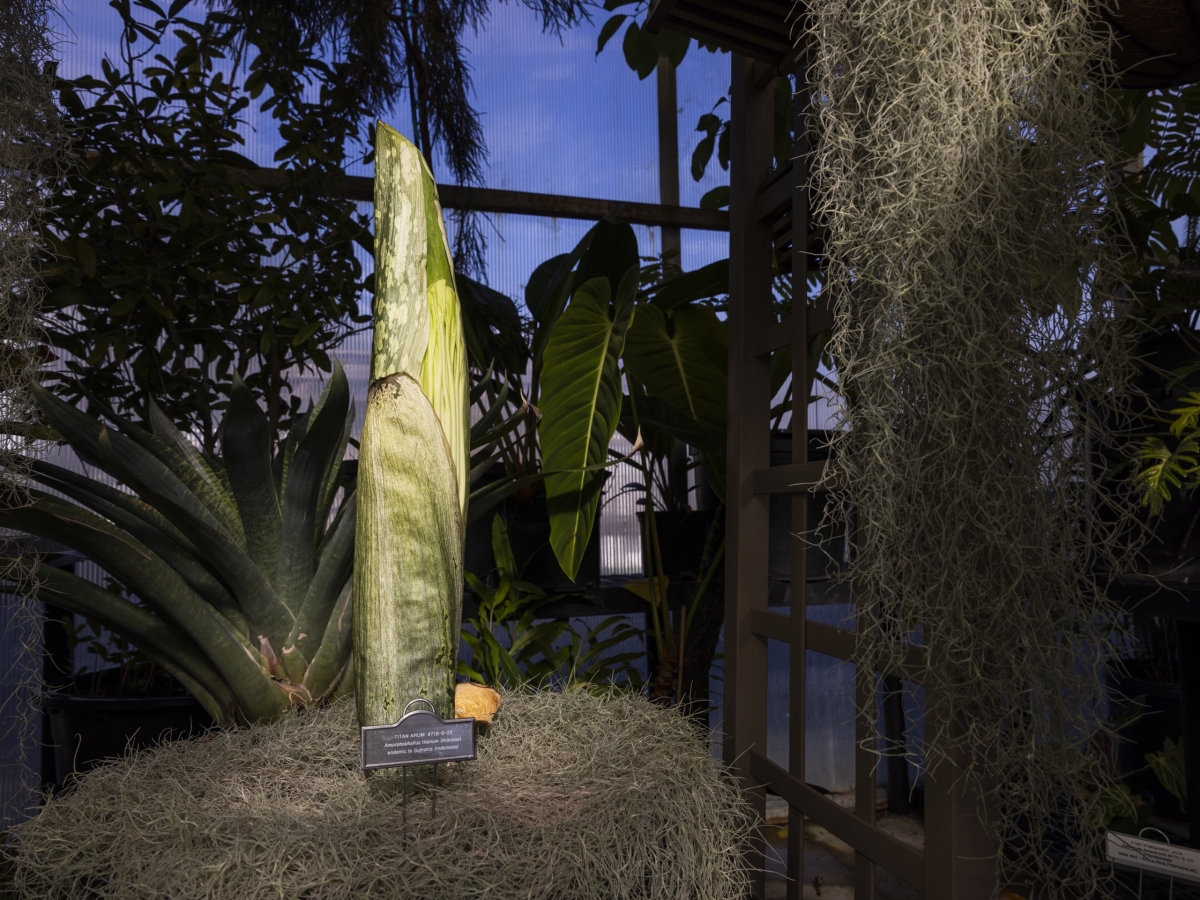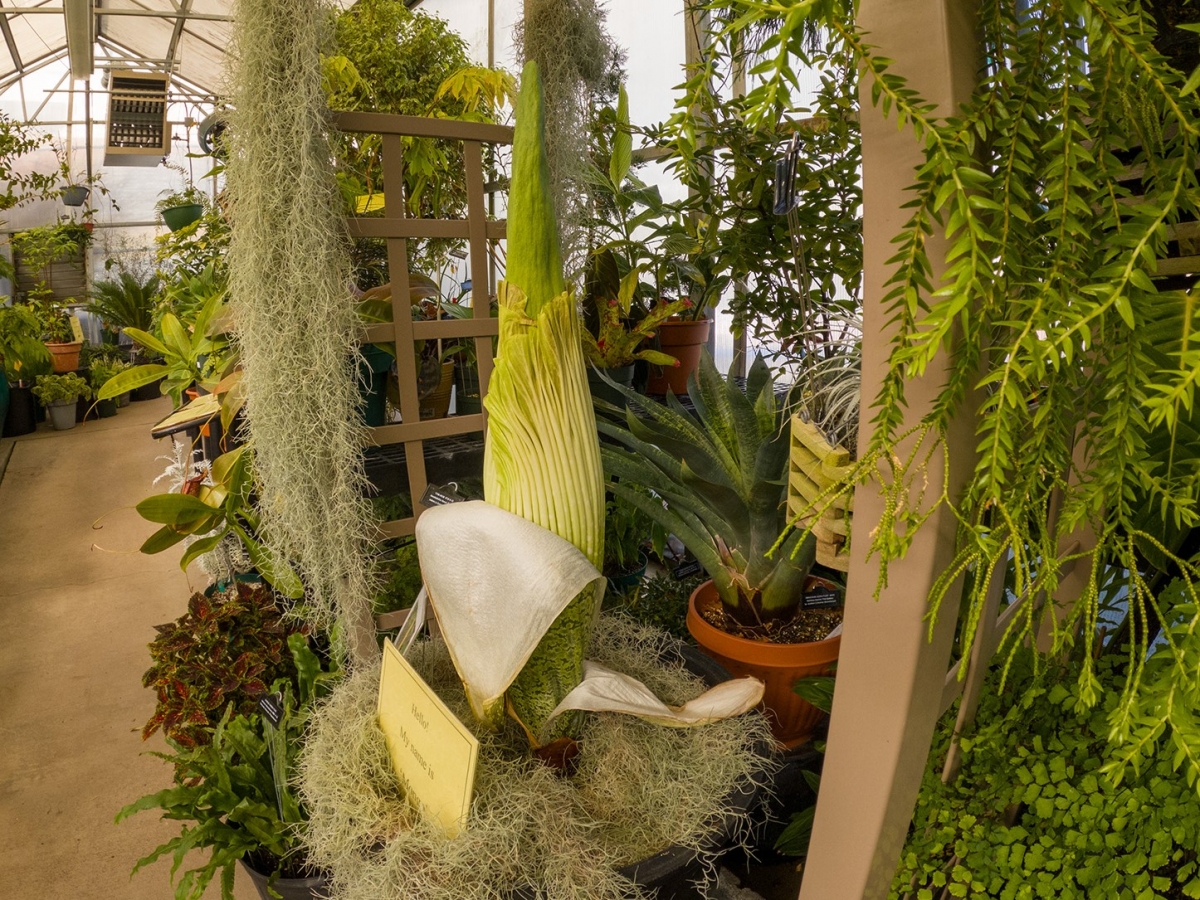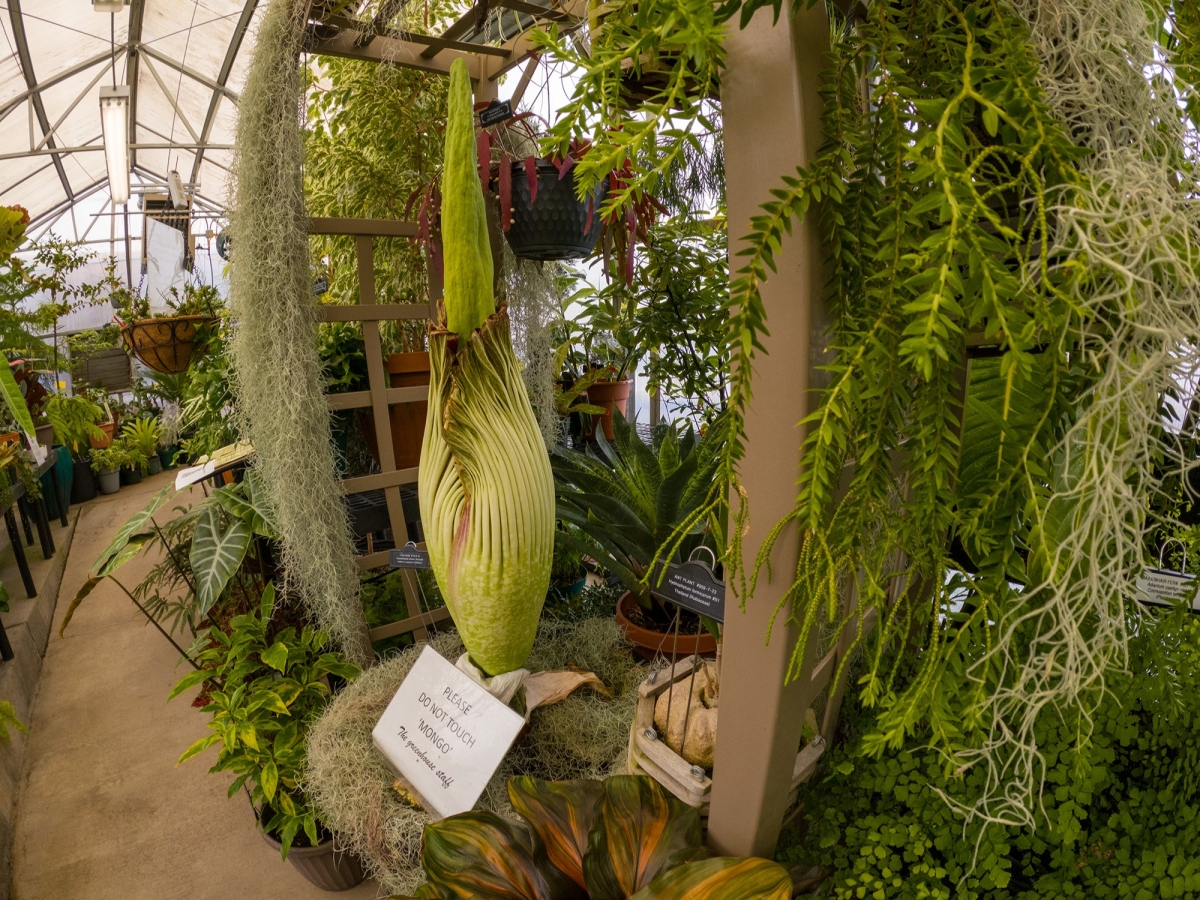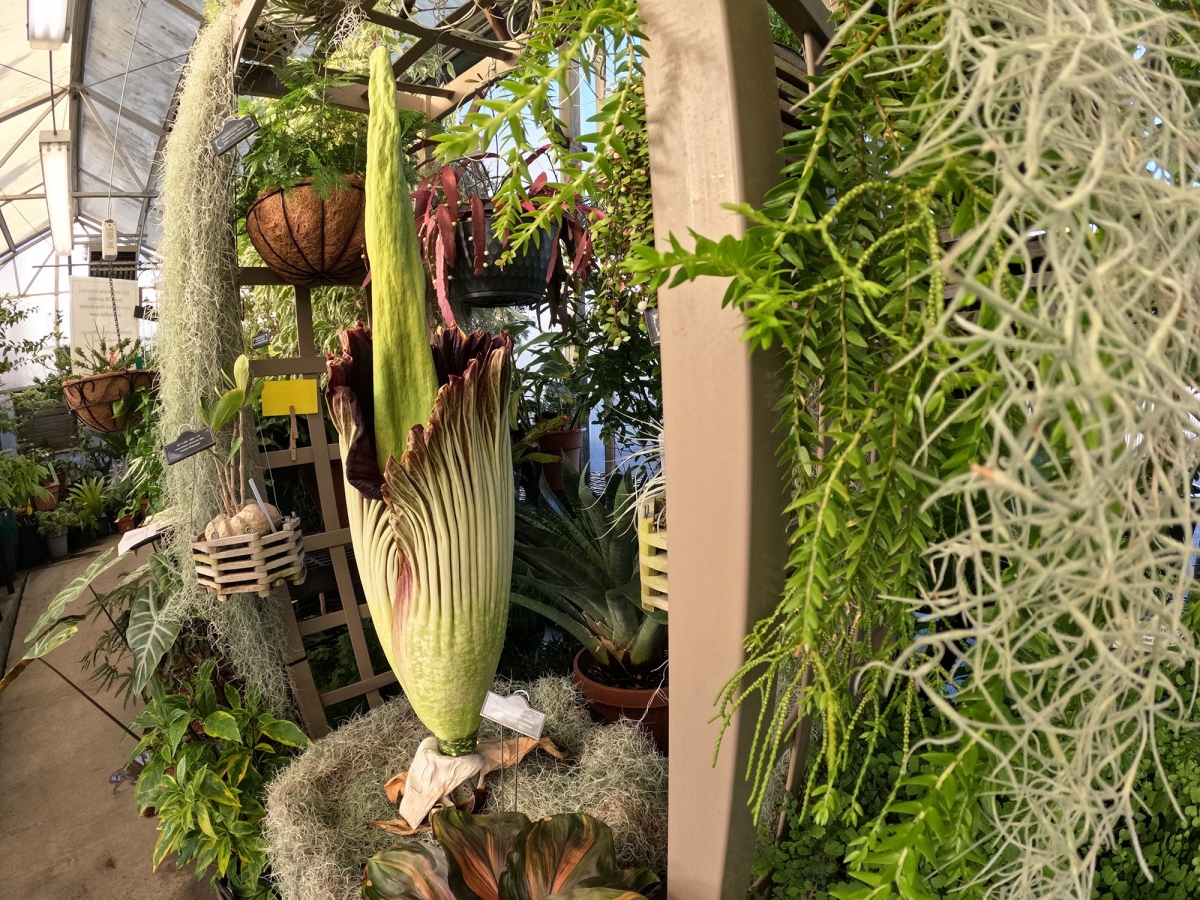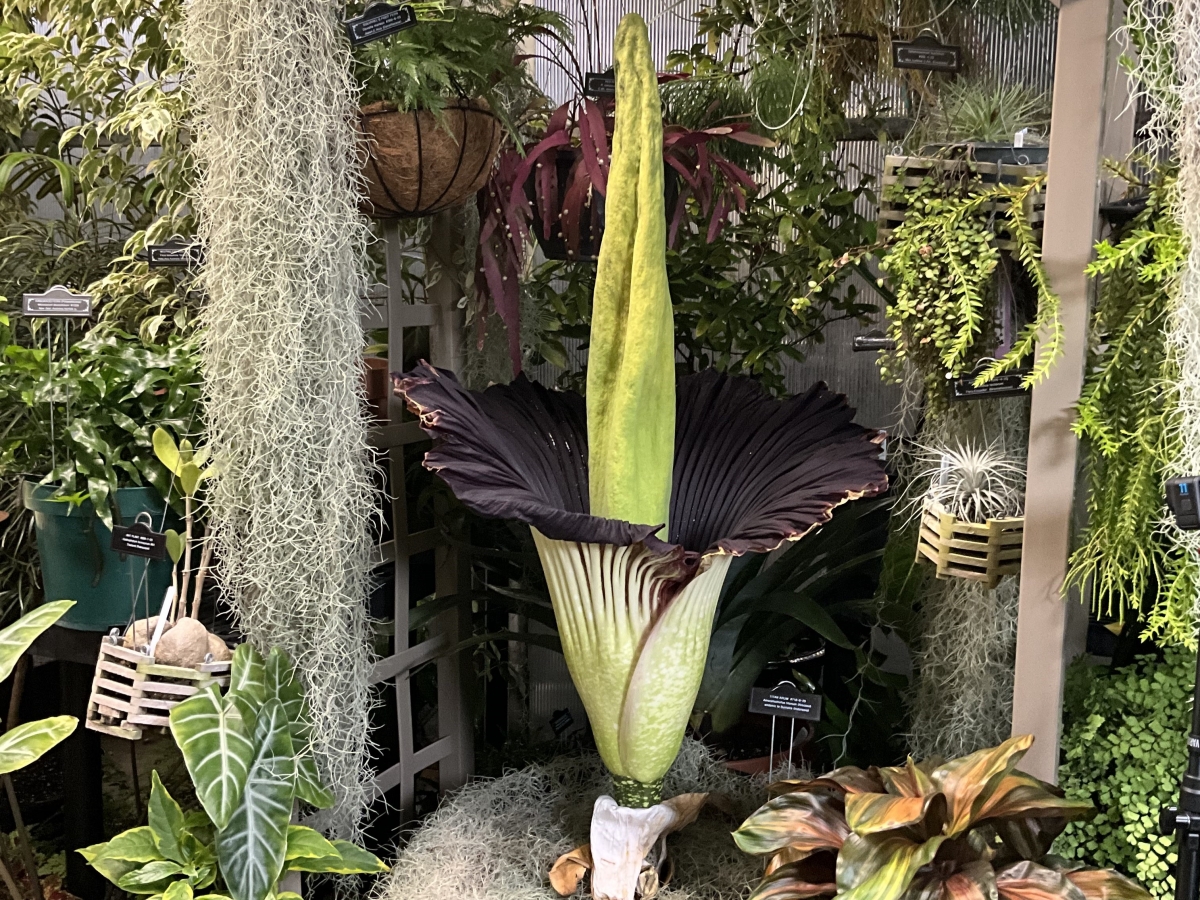Appalachian State University's Titan Arum, or "corpse flower," is expected to bloom this November at the Department of Biology's Greenhouse. The bloom will be the plant's first since it arrived in Boone over a decade ago.
Native to the Indonesian island of Sumatra, the Titan Arum, formally Amorphophallus titanum, is the world’s largest unbranched inflorescence, a floral structure composed of many smaller flowers. Commonly referred to as a "corpse flower," a blooming Titan Arum emits a powerful stench that attracts pollinators like flies and carrion beetles. The blooming is an exciting event because most corpse flowers require seven to ten years to produce their first blooms. Once the Titan Arum reaches maturity, it has an unpredictable blooming cycle, typically blooming once every few years. The average bloom lasts only two to three days with the peak growth—and odor—occurring at night into early morning.
In 2018, the International Union for Conservation of Nature listed the Titan Arum as endangered, estimating that only 1,000 plants remain in the wild due to the destruction of native forest habitat. Given their rare status and infamous aroma, the corpse flower is a popular attraction at many conservatories across the United States, including those at North Carolina State University in Raleigh and the University of North Carolina at Charlotte.
App State's corpse flower is named "Mongo" after Jerry Meyer, who has served as the Greenhouse manager for 14 years.
Learn more about the corpse flower lifecycle
Bloom Timeline
- April 4, 2022: Mongo's corm formed a new leaf. It took 15 months to grow the new leaf and store energy for the bloom.
- May 18, 2023: Leaf died back and it was thought the corm was going to go dormant.
- August 25, 2023: First sight of new growth in the corm - never has the corm gone from leaf to new growth so quickly!
- November 8, 2023: First recognition that the growth is a flower and not a leaf.
- November 14, 2023: Frills on the developing spathe can be clearly seen.
- November 20, 2023: Frills on the spathe begin to show maroon coloring.
- November 24, 2023: Spathe opens into full bloom, Mongo begins to release a distinct odor.
- November 25, 2023: Mongo is in full bloom. A window was cut in base of the spathe to reveal the male and female florets.
- November 26, 2023: The flower development is complete and the dormancy process begins.
